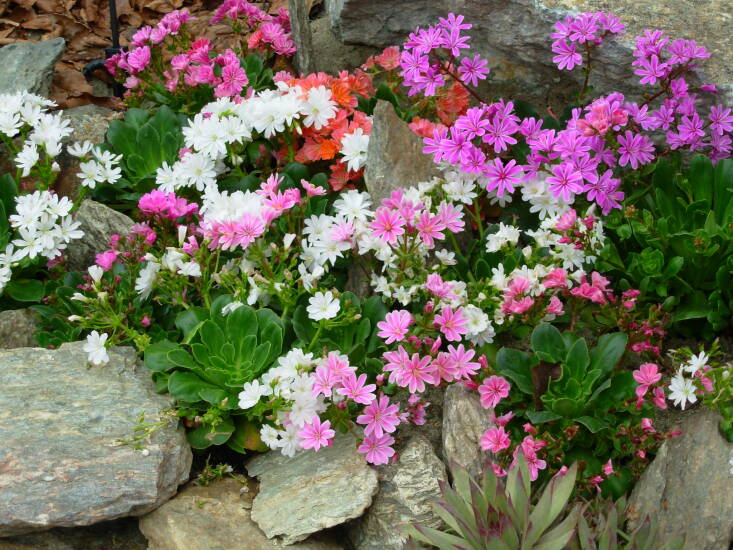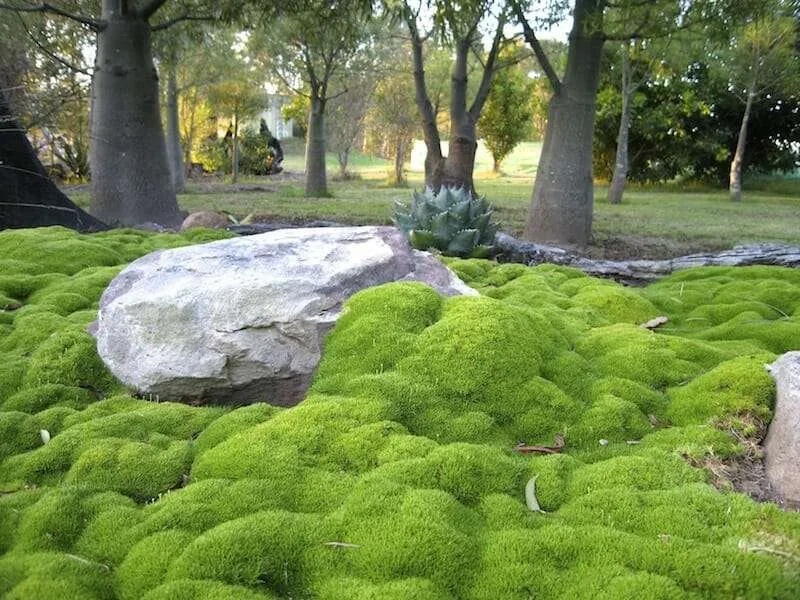Cliff Maids, Lewisia cotyledon
Meet my new plant crush, Lewisia. Interestingly, it wasn’t love at first sight. I’d glazed over this evergreen perennial at garden stores probably a million times because it wasn’t flowering, and my thoughts were always, I have no real interest in this tiny, fleshy thing. But had I first seen it in bloom in a garden, reaching its full potential and not stunted in a constricting four-inch container, then I would have definitely been an early groupie. Also, I’m fairly certain I wasn’t aware this was a California native. Because if I had known, then I would’ve been like, I love plants that are California native, like me.
Here’s why I’m a Lewisia convert.

Let’s start with the accolades. Lewisia (also known as cliff maids) won the prestigious Award of Garden Merit of the Royal Horticultural Society. Not too shabby. It’s easy to see why it garnered attention. This low-maintenance evergreen perennial grows into an impressive rosette of succulent-like dark green fleshy leaves that are shaped like long spoons. But as I mentioned, it’s not the foliage that led to my change of heart. The eye-catching feature are the sprays of the most charming funnel-shaped flowers. Opening to about one inch across on sturdy six-inch stems, the flowers start their show in the late spring and continue through summer, or later if happy. Ranging from pale pink, yellow, to white, salmon or magenta, the delicate petals beg for a closer inspection of its polite detailing and artistic shading between hues.

Hailing from Southern Oregon and Northern California, this sweet but hardy plant is named after the explorer Meriwether Lewis, who first discovered its close relative Lewisia redevia while on the famed Lewis and Clark Expedition. Quite small and reaching only 8 to 10 inches tall, this plant eventually grows into a surprisingly charming bouquet that’s found on rocky cliffs in high elevations. Its strong root structure and deep tap root helps it cling to a rugged terrain. You can help this plant thrive in your garden by trying to recreate its natural environment. This means planting it in very fast draining soil and preferably grown sideways, tucked into a rocky wall so that any excess water will drain away from the crown.
Related: My crafty husband built a green roof for our little free library. I filled the “planter” with fast draining succulent soil and added a six-pack of Lewisia. Because of the pitch of the roof, these cuties ended up being planted on an angle, like their native habitat. I also added some Sedum ‘Blue Spruce’ and ‘Cape Blanco’ to the mix. After a few days, the Lewisia started blooming like crazy, beckoning and welcoming curious readers to the library.
Cheat Sheet

- So lovely and looking right at home in rock gardens, crevice gardens, green roofs, and containers.
- Understandably attracts butterflies and other pollinators.
- Cut the flowers and add to tiny flower arrangements.
- Great companion plants include: Campanulas, Sedums, and fellow California native Dudleyas
Keep It Alive

- Plant these cuties in full sun near the coast or part sun inland where summers are hot.
- Prefers slightly acidic sandy soil that is very well-draining. I have mine planted in succulent soil.
- Plant them high in the soil to keep the crown dry.
- Lewisia is not a thirsty plant and is drought tolerant once established. Protect from overly wet winters if possible.
- Appreciates a top dressing of granite to simulate its native rocky home.
- Prune away spent flowers to prolong blooming.
See also:
- The Garden Decoder: What Is ‘Crevice Gardening’?
- Flavorful and Fragrant: 5 Top Drought-Tolerant Herbs to Plant Now
- Gardening 101: Dudleya Succulents












Have a Question or Comment About This Post?
Join the conversation (0)